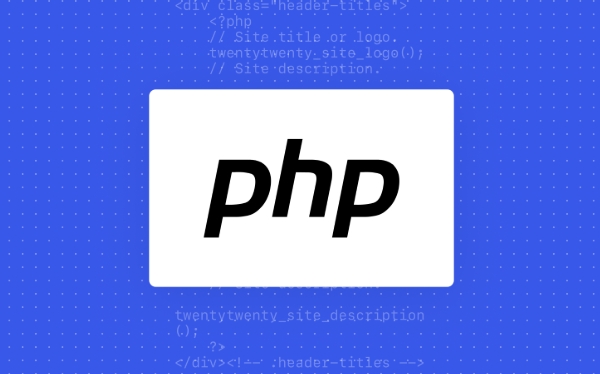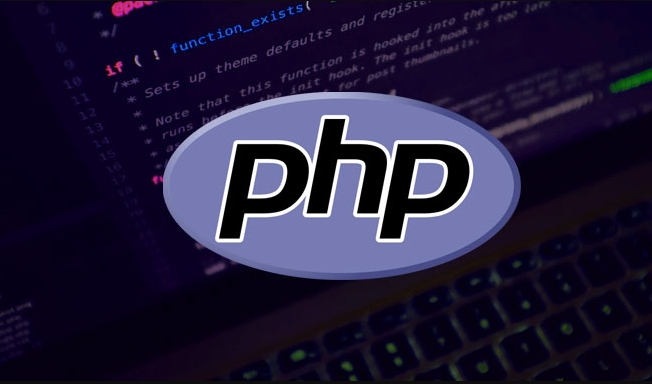To check if a key exists in an array in PHP, use array_key_exists(), which reliably checks for the presence of a key regardless of its value. 1. Use array_key_exists('key', $array) to confirm whether a key exists, even if its value is null or false. 2. Alternatively, isset($array['key']) checks both existence and that the value is not null, but may return false if the value is explicitly null. 3. For multidimensional arrays, verify each level individually to avoid errors. 4. Combine with !empty($array['key']) when needing to ensure the key exists and has a non-empty, meaningful value.

Checking if a key exists in an array is pretty straightforward in PHP, and it's something you'll probably do often when working with arrays—especially associative ones. The most reliable way to do this is using the array_key_exists() function, though there are other methods too.

Use array_key_exists() for clear and accurate checks
This is the go-to function when you want to know whether a specific key is present in an array. It doesn't care what the value is—it only checks for the existence of the key.

$array = ['name' => 'John', 'age' => 30];
if (array_key_exists('name', $array)) {
echo "The 'name' key exists.";
}It works even if the value is null or evaluates to false. This makes it more reliable than just checking the value directly.
Some things to note:

- The first argument is the key you're looking for (as a string or integer).
- The second is the array you're searching in.
- It returns a boolean (
trueorfalse).
Or use isset(), but be careful
Another common approach is using isset(), which also checks if a key exists and its value is not null.
if (isset($array['name'])) {
echo "The 'name' key is set and not null.";
}But here's the catch: if the value is explicitly null, isset() will return false, even though the key exists. So:
$array = ['key' => null];
var_dump(isset($array['key'])); // false
var_dump(array_key_exists('key', $array)); // trueSo if your goal is strictly to check for the presence of a key regardless of its value, stick with array_key_exists().
For multidimensional arrays, check one level at a time
If you're dealing with nested arrays, you can't just pass a path like 'level1.level2' into array_key_exists(). You need to check each level individually to avoid errors.
For example:
$array = [
'user' => [
'profile' => [
'email' => 'test@example.com'
]
]
];
if (isset($array['user']) && isset($array['user']['profile']) && isset($array['user']['profile']['email'])) {
echo "Email is set.";
}Or wrap it in a helper function if you do this often.
You could write a simple recursive function or loop through the keys step by step, making sure each one exists before going deeper.
Bonus tip: Combine with !empty() if needed
Sometimes you want to make sure a key exists and has a meaningful value. In that case, you might combine it with !empty():
if (array_key_exists('username', $array) && !empty($array['username'])) {
// Key exists and value is not empty
}Keep in mind that empty() does more than just check for null—it treats 0, '', and [] as empty too. So use it carefully depending on what counts as valid data in your case.
That's basically it. Whether you're validating form input, parsing JSON, or working with config files, knowing how to safely check for array keys helps prevent bugs and notices in your PHP scripts.
The above is the detailed content of how to check if key exists in php array. For more information, please follow other related articles on the PHP Chinese website!

Hot AI Tools

Undress AI Tool
Undress images for free

Undresser.AI Undress
AI-powered app for creating realistic nude photos

AI Clothes Remover
Online AI tool for removing clothes from photos.

Clothoff.io
AI clothes remover

Video Face Swap
Swap faces in any video effortlessly with our completely free AI face swap tool!

Hot Article

Hot Tools

Notepad++7.3.1
Easy-to-use and free code editor

SublimeText3 Chinese version
Chinese version, very easy to use

Zend Studio 13.0.1
Powerful PHP integrated development environment

Dreamweaver CS6
Visual web development tools

SublimeText3 Mac version
God-level code editing software (SublimeText3)

Hot Topics
 How do I implement authentication and authorization in PHP?
Jun 20, 2025 am 01:03 AM
How do I implement authentication and authorization in PHP?
Jun 20, 2025 am 01:03 AM
TosecurelyhandleauthenticationandauthorizationinPHP,followthesesteps:1.Alwayshashpasswordswithpassword_hash()andverifyusingpassword_verify(),usepreparedstatementstopreventSQLinjection,andstoreuserdatain$_SESSIONafterlogin.2.Implementrole-basedaccessc
 How can you handle file uploads securely in PHP?
Jun 19, 2025 am 01:05 AM
How can you handle file uploads securely in PHP?
Jun 19, 2025 am 01:05 AM
To safely handle file uploads in PHP, the core is to verify file types, rename files, and restrict permissions. 1. Use finfo_file() to check the real MIME type, and only specific types such as image/jpeg are allowed; 2. Use uniqid() to generate random file names and store them in non-Web root directory; 3. Limit file size through php.ini and HTML forms, and set directory permissions to 0755; 4. Use ClamAV to scan malware to enhance security. These steps effectively prevent security vulnerabilities and ensure that the file upload process is safe and reliable.
 What are the differences between == (loose comparison) and === (strict comparison) in PHP?
Jun 19, 2025 am 01:07 AM
What are the differences between == (loose comparison) and === (strict comparison) in PHP?
Jun 19, 2025 am 01:07 AM
In PHP, the main difference between == and == is the strictness of type checking. ==Type conversion will be performed before comparison, for example, 5=="5" returns true, and ===Request that the value and type are the same before true will be returned, for example, 5==="5" returns false. In usage scenarios, === is more secure and should be used first, and == is only used when type conversion is required.
 How do I perform arithmetic operations in PHP ( , -, *, /, %)?
Jun 19, 2025 pm 05:13 PM
How do I perform arithmetic operations in PHP ( , -, *, /, %)?
Jun 19, 2025 pm 05:13 PM
The methods of using basic mathematical operations in PHP are as follows: 1. Addition signs support integers and floating-point numbers, and can also be used for variables. String numbers will be automatically converted but not recommended to dependencies; 2. Subtraction signs use - signs, variables are the same, and type conversion is also applicable; 3. Multiplication signs use * signs, which are suitable for numbers and similar strings; 4. Division uses / signs, which need to avoid dividing by zero, and note that the result may be floating-point numbers; 5. Taking the modulus signs can be used to judge odd and even numbers, and when processing negative numbers, the remainder signs are consistent with the dividend. The key to using these operators correctly is to ensure that the data types are clear and the boundary situation is handled well.
 How can you interact with NoSQL databases (e.g., MongoDB, Redis) from PHP?
Jun 19, 2025 am 01:07 AM
How can you interact with NoSQL databases (e.g., MongoDB, Redis) from PHP?
Jun 19, 2025 am 01:07 AM
Yes, PHP can interact with NoSQL databases like MongoDB and Redis through specific extensions or libraries. First, use the MongoDBPHP driver (installed through PECL or Composer) to create client instances and operate databases and collections, supporting insertion, query, aggregation and other operations; second, use the Predis library or phpredis extension to connect to Redis, perform key-value settings and acquisitions, and recommend phpredis for high-performance scenarios, while Predis is convenient for rapid deployment; both are suitable for production environments and are well-documented.
 How do I stay up-to-date with the latest PHP developments and best practices?
Jun 23, 2025 am 12:56 AM
How do I stay up-to-date with the latest PHP developments and best practices?
Jun 23, 2025 am 12:56 AM
TostaycurrentwithPHPdevelopmentsandbestpractices,followkeynewssourceslikePHP.netandPHPWeekly,engagewithcommunitiesonforumsandconferences,keeptoolingupdatedandgraduallyadoptnewfeatures,andreadorcontributetoopensourceprojects.First,followreliablesource
 What is PHP, and why is it used for web development?
Jun 23, 2025 am 12:55 AM
What is PHP, and why is it used for web development?
Jun 23, 2025 am 12:55 AM
PHPbecamepopularforwebdevelopmentduetoitseaseoflearning,seamlessintegrationwithHTML,widespreadhostingsupport,andalargeecosystemincludingframeworkslikeLaravelandCMSplatformslikeWordPress.Itexcelsinhandlingformsubmissions,managingusersessions,interacti
 How to set PHP time zone?
Jun 25, 2025 am 01:00 AM
How to set PHP time zone?
Jun 25, 2025 am 01:00 AM
TosettherighttimezoneinPHP,usedate_default_timezone_set()functionatthestartofyourscriptwithavalididentifiersuchas'America/New_York'.1.Usedate_default_timezone_set()beforeanydate/timefunctions.2.Alternatively,configurethephp.inifilebysettingdate.timez






